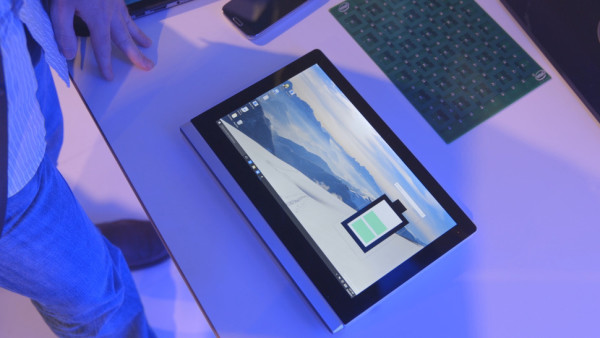 Intel recently announced that is now developing a wireless charging system that packs enough power to replenish a laptop battery, which it aims to deploy to the market in 2016.
Intel recently announced that is now developing a wireless charging system that packs enough power to replenish a laptop battery, which it aims to deploy to the market in 2016.
The chip-maker is developing a system that can handle up to 20 watts of power – about four times the amount available from the wireless charging mats already available for some smartphones.
At the IFA trade show in Berlin, the company is demonstrating a wireless charging unit that can be attached to the underside of a desk and send power to devices sitting on the desk.
During the demonstration, it was shown to power two smartphones simultaneously or, with them moved out of the charging zone, a convertible PC.
The charging station sends energy through up to five centimeters of desk to an area about 20 centimeters in diameter. It wasn’t very difficult to find the spot, although sometimes devices needed a slight nudge to begin charging. But then, it is still a prototype.
Intel said it is working with equipment makers on the technology and expects to see a series of announcements through 2016.
A lack of compatibility between competing technologies has dogged the rollout of wireless charging technology in smartphones, but the industry is slowing coming together around two competing standards.
The Intel device is based on a magnetic resonance system that is the result of a merger between two former competitors, the Alliance for Wireless Power and the Power Matters Alliance. Their competitor remains the Qi alliance.
The wireless gigabit standard is currently supported by devices from HP and Dell and provides a gigabit-speed wireless data link between computer and hub. Peripherals such as monitors, hard disks and keyboards are connected to the hub and the link to the PC is maintained over the air.
The WiGig link remained strong over about five meters during the demonstration, so people will have a small degree of mobility at home or office.
Intel hopes that a combination of the two systems will help realise that long held goal of a truly wireless desk, but cables are probably never going to completely disappear. After all, for most people the paperless office is still not a reality.





